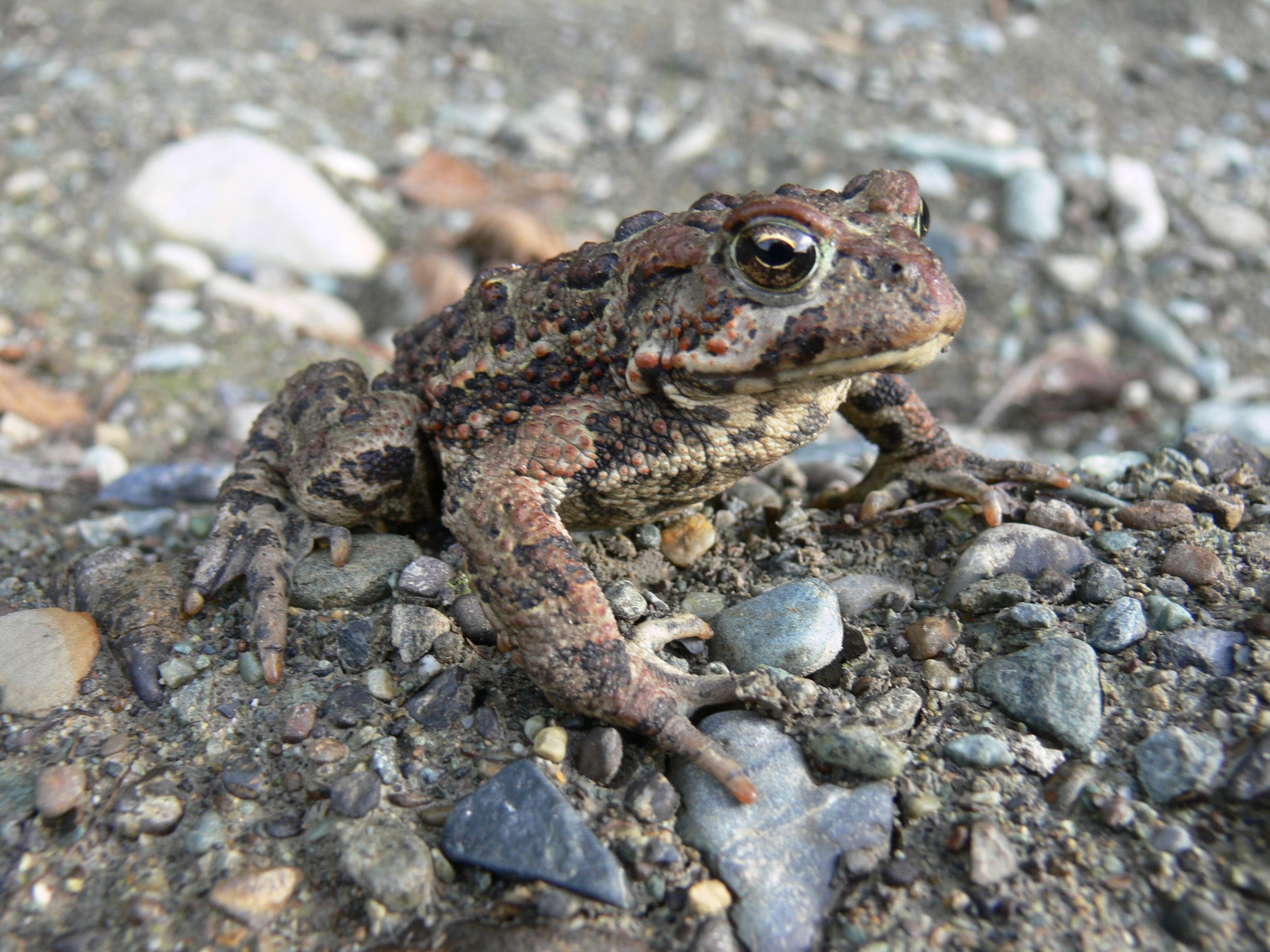Boreal Toad (Anaxyrus boreas boreas)
Stout and warty, the boreal toad is exactly what most people think of when they picture a toad. The trilling calls of male boreal toads during the spring and summer is a sound unique to Alberta – male toads outside of the province lack the vocal sacs needed to produce these advertisement calls.
Photo by Doris May
Why they Matter to Us
The thin, vascular skin of boreal toads makes them sensitive to environmental changes, so the presence of boreal toads can be used as an indicator of healthy habitat.
Boreal toads help transfer energy and nutrients between aquatic and terrestrial environments.
The boreal toad is listed as a Species of Special Concern by the Committee on the Status of Endangered Wildlife in Canada.
How You Can Help
Support protected areas in the Edmonton region (such as EALT). You can donate or volunteer your time to help with conservation efforts.
Help protect wetlands by preventing run-off of household products.
Wash your car at the carwash or use biodegradable soap.
If using pesticides or herbicides, follow the directions carefully and avoid use during unfavourable weather conditions.
Minimize the use of road salts when possible.
How to Identify
Identify by Sight
To identify the boreal toad, look for these distinguishing features:
Raised oval shaped parotid glands behind eyes.
Large reddish brown warts often set in dark blotches.
Background colour ranging from olive-green to brown and almost black.
White belly with dark mottling. May have a light stripe down the middle of the back.
Short limbs.
Identify by Sound
Not all boreal toads call. Those that do produce a series of soft whistles or chirps.
In Alberta, male toads produce a long high-pitched trilling advertisement call.
Where to Find
Boreal toads inhabit a variety of habitats in southwest, central, and northern Alberta including wetlands, lake and river shores, meadows, and forests. Boreal toads breed in shallow aquatic habitats, often in beaver ponds. Adult toads overwinter below the frost line in peat hummocks, natural crevices, or mammal burrows.
Life Cycle
Photo by Gerald Romanchuk
In Alberta, male boreal toads call to attract females during the breeding season. Males will grasp receptive females in a posture called amplexus and fertilize the eggs externally as they are laid. Females may lay 3000 – 12,000 eggs in long strings. The eggs hatch in 3 – 12 days, and the tadpoles metamorphose after 4 – 12 weeks. The newly metamorphosed toadlets then emerge from the aquatic breeding habitat in large masses.
Food Chain
Boreal toads are nocturnal feeders that eat worms, slugs, and insects.
Tadpoles are eaten by birds including ravens and crows, herons, and sandpipers.
Adult toads are eaten by birds, gartersnakes, coyotes, skunks, and foxes.
Fun Facts
Boreal toads produce toxins from glands in their skin to discourage predators.
You can’t get warts from touching a toad.
Albertan boreal toads are often referred to as the calling population.
Boreal toads return to the same wetlands for breeding year after year.



